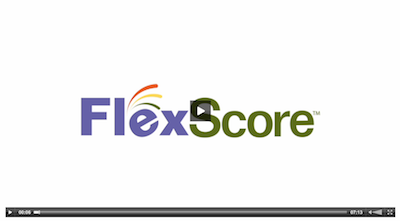On today’s broadcast, a new risk tolerance questionnaire gets reviewed. How is it different from the existing solutions already on the market? Gamification is coming to a financial plan near you. Learn how one company is getting consumers to follow through with smart financial moves. And I have a bone to pick with Bob Veres. Find out what he said that I feel mischaracterizes how the future of the financial planning profession will evolve.
So get ready, FPPad Bits and Bytes begins now!
(Watch FPPad Bits and Bytes on YouTube)
This week’s episode of Bits and Bytes is brought to you by Total Rebalance Expert, the industry’s largest, privately owned portfolio rebalancing software provider.
Now available as a part of the Orion Advisor Services platform, TRX features tax-efficient rebalancing, an easy to use interface, and more, all at an affordable price. Learn how you can gain a half a million dollar return on your technology investment by downloading their latest white paper at fppad.com/trx
Here are this week’s stories of interest:
New Test for Risk Tolerance from Financial Planning
Visit the Pocket Risk website
[This week’s top story is a review of a new risk assessment tool called Pocket Risk. Pocket Risk is the latest product that joins Riskalyse, Finametrica, Financial DNA and several others to assess client risk tolerance using an interactive questionnaire.
Clients go through a list of 20 questions regarding their personal definition of risk, preferences around investment volatility, and other introspective qualities to generate their risk tolerance score, measured from 0 to 100. If you’re curious about Pocket Risk’s specific methodology, the company posted technical details on their website. And Bruckenstein compliments Pocket Risk for its analysis report, calling it quote “short and sweet.”
A two-week free trial of Pocket Risk is available, and subscriptions begin at just $55 per month for one user.] Recently, a number of firms have come to market with standalone applications to measure risk tolerance. One is Pocket Risk, which has an intriguing pedigree and approach.
A new planning tool for advisers challenges clients to win a game from Investment News
[Next is a story about a company called FlexScore, which is using gamification to encourage consumers to make positive choices when managing their finances. Created by financial advisors Jeff Burrow and Jason Gordo, Flexscore creates a score for each user, ranging from zero to 1,000, based on how well they manage their personal finances.
It takes about 20 minutes to complete a profile and connect financial accounts using account aggregation, and users can increase their score by completing recommended action steps, which can be as simple as watching a view for a few points, or paying off debt for a lot more points.
While an advisor version of Flexscore isn’t available today, Flexscore just announced an advisor version of the product at Finovate Spring 2014, so I expect the application of gamification surrounding financial decision making to weave its way into the technology solutions you use with clients. So keep Flexscore on your radar and think about how gamaification might make sense in the technology you use with clients.] Jason Gordo told me he was bringing FlexScore to Finovate because the online tool uses the popular tech trend of gamification to engage consumers in the process of goals-based wealth planning.
Ten Ways the Next Generation of Financial Planners Will Change the Profession from Advisor Perspectives
[And finally, this week’s broadcast wraps up with commentary from the venerable Bob Veres, who writes at Advisor Perspectives about ten ways the next generation of financial planners are going to change the profession.
In his article, Veres highlights trends he sees among younger financial planners, which includes the complete outsourcing of investment management activity, charging clients a low-cost monthly subscription automatically paid by credit card, hosting videoconferences with Skype and Google Hangouts, and running through illustrations in financial planning software in real time with clients, either in the room or through a screen sharing programs.
But here’s the beef I have with Veres’ article: none of the ten characteristics are exclusive to younger financial planners. Whether you’re a new advisor or a veteran of the industry, you can use any of the ten techniques to streamline your business, add scalability, and enhance the experience you deliver to clients.
So if there’s one takeaway I have from Veres’ article, it’s the call to action of how quickly your business can implement useful technology and ultimately change the profession for the better.] Having interviewed a number of people who will attend the NexGen gathering, and others who are in their generational cohort, I have distilled the ten key themes that illustrate how the next generation of advisors will change the profession when they take the reins.
Here are stories that didn’t make the cut in this week’s broadcast:
Ric Edelman: Stay Cutting-Edge on Technology or Fail from Think Advisor
Education is key to winning Next Gen assets from InvestmentNews.com
Five Easy-To-Use Tech Tools For Advisors from Financial Advisor Magazine
Motif Launches Products to Help Advisors Compete With Robo-Advisors from Think Advisor







